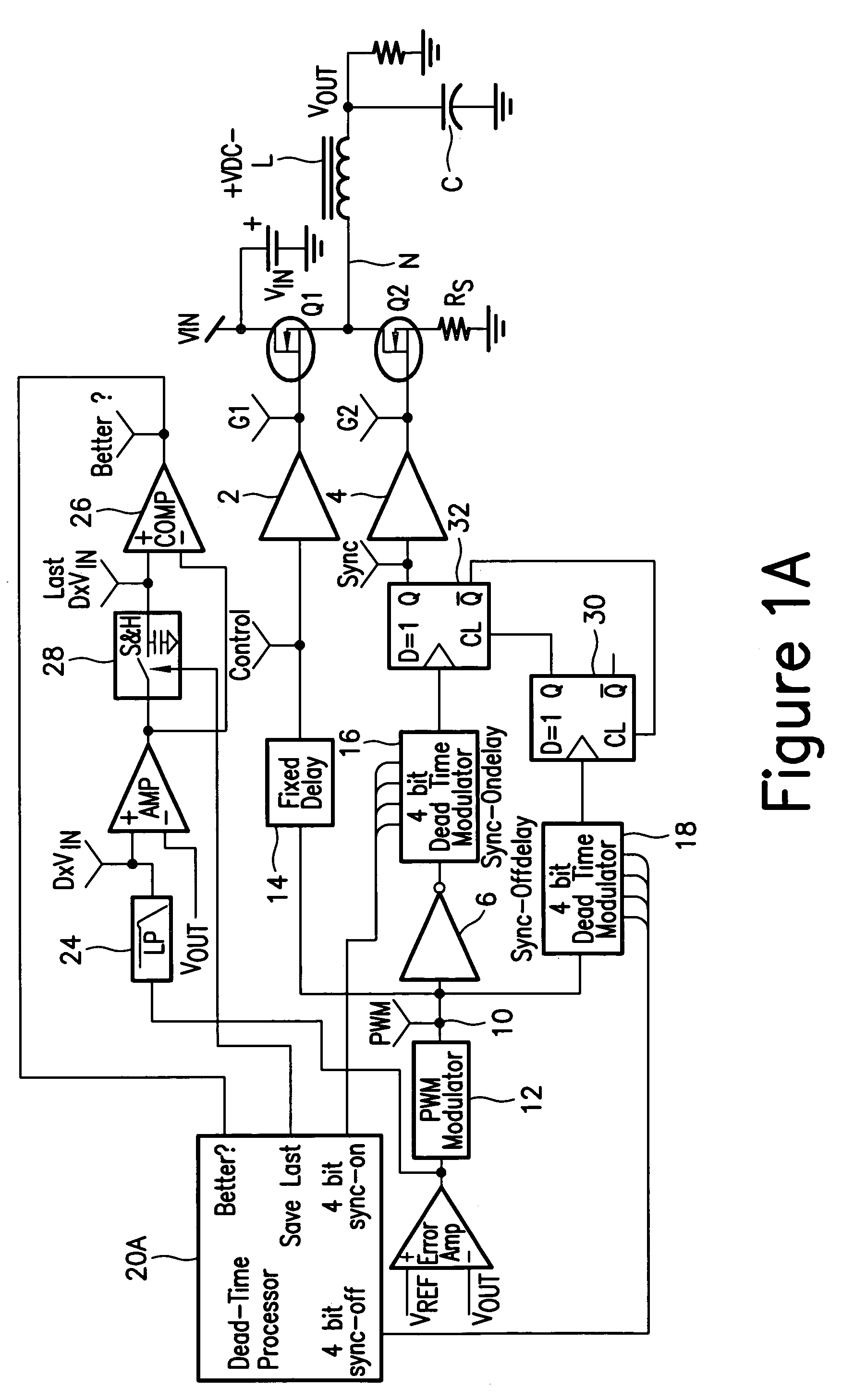Method and apparatus for intelligently setting dead time
a dead time and intelligent technology, applied in the direction of electric variable regulation, process and machine control, instruments, etc., can solve the problems of significant dead time loss, high power loss penalty for significant overlap, and translates into, so as to minimize the overall converter power loss, minimize duty factor, and cost effective and convenient
- Summary
- Abstract
- Description
- Claims
- Application Information
AI Technical Summary
Benefits of technology
Problems solved by technology
Method used
Image
Examples
Embodiment Construction
[0050]Turning again to the drawings, FIG. 1 shows one possible implementation of a converter circuit implementing the intelligent dead time (IDT) method according to the present invention. Many other implementations are possible because the essential element of the present invention is that optimum dead time is “memorized” over the power supply operating range, and then “recalled” when needed later. Conditions monitored by the system will vary from one implementation to another, but may include: Input voltage, output current (e.g., synchronous switch current), and MOSFET driver temperature.
[0051]FIG. 1 shows one possible implementation of the present invention which combines digital and analog circuitry. Others are possible and most blocks and functions can be implemented with digital circuitry as well as analog.
[0052]FIG. 1 shows a DC—DC converter circuit that has been modified to incorporate the technique according to the present invention to intelligently set dead time to minimiz...
PUM
 Login to View More
Login to View More Abstract
Description
Claims
Application Information
 Login to View More
Login to View More - R&D
- Intellectual Property
- Life Sciences
- Materials
- Tech Scout
- Unparalleled Data Quality
- Higher Quality Content
- 60% Fewer Hallucinations
Browse by: Latest US Patents, China's latest patents, Technical Efficacy Thesaurus, Application Domain, Technology Topic, Popular Technical Reports.
© 2025 PatSnap. All rights reserved.Legal|Privacy policy|Modern Slavery Act Transparency Statement|Sitemap|About US| Contact US: help@patsnap.com



